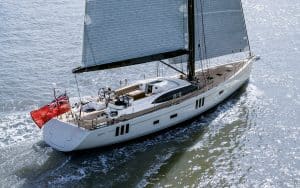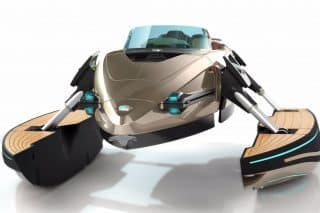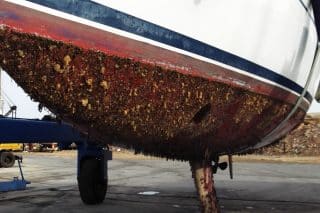A new area in the market is starting to appear for sailing yachts, and Oyster Yachts‘ latest designs aim to broach it.
Both the yachting and shipping markets have seen vessels getting larger over the last decade or so, and owners are looking to trade up in size of vessels.
Currently, the yacht market is divided in two segments: the 60-foot and under, which caters to the family cruising market, and the 80-foot plus, which usually requires crew onboard to assist in the operation of these luxury yachts.
Between 60-80ft
David Tydeman, Oyster Yachts’s CEO, points out a new type of buyer on the market for the mid section, between 60- and 80-foot. There is an opening for owners who may want to trade up in size, but still want to sail the vessel with minimal or no crew, and they want it to perform like a racing yacht.
Both the latest 675 and 745 are aimed at meeting these needs. The development of the Oyster 675, the smallest of five new models from Oyster Yachts looks at catering for this market. Tydeman says, “We started the development for the 675 two or so years ago as a part of a plan to replace our 82, 100 and 125 series.”
Using Larger Yachts’ Knowledge
The knowledge gained from the larger yachts that Oyster Yachts produce was put in to the latest designs. “It started with the 885, looking at blade jibs, pedestals, different hull shape, rudders and lots of tank testing. With this data we were able to scale this down for the 675,” Tydeman adds.
The flexibility of the design allows for the vessel to be customized by the owner so that they can install performance equipment onboard if needed.
Like the slightly larger 745, the 675’s foam core, glass fiber hull is constructed using Oyster’s engineered laminate layup, consisting of high-tech, fiber-reinforced materials for increased strength and reduced weight.
As is standard with the beamier Oyster designs, the 675 has twin rudders and carbon fibre wheels, and a standard semi bulb deep keep. There is also the option of swinging centerboard. In an effort to keep things simple, for short-handed sailing in particular, it is possible to opt for powered main and headsail furling for push-button control.
The overall increase in volume and structural configuration has allowed designers to utilize the space and configure the internal layout of the yachts to give more room inside for living areas and cabin spaces.
The first of the Oyster 675s will be delivered to its owner in March 2017.
TECHNICAL PARTICULARS
- Length oa: 21.07m
- Length of hull: 19.89m
- Length of waterline: 8.16m
- Beam: 5.65m
- Draught: 2.95m
- Displacement: 37,500kg
- Engine: Volvo D4-180 132kW
- Fuel: 1,900litres
- Water: 1,550litres
- Sail area: 229m2
- Air draught: 30.75m2





